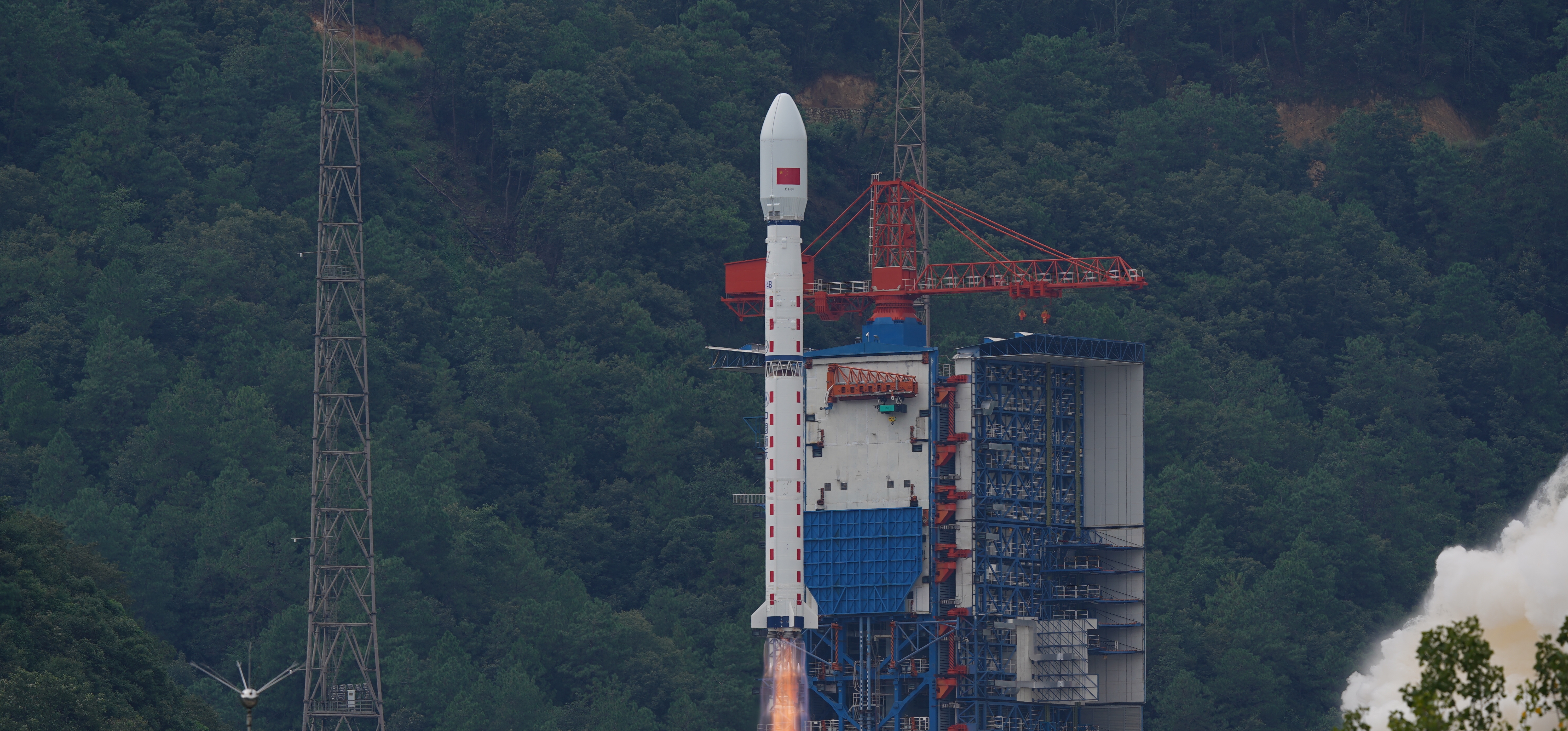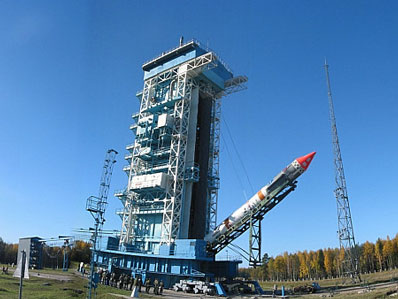Previous Spaceflight Launches
Filter by Agency, Locations or Vehicles
Show All LaunchesDelta IV M+(4,2) | Eutelsat W5
United Launch Alliance | United States of AmericaCape Canaveral SFS, FL, USA
Nov. 20, 2002, 10:39 p.m.
Soyuz-FG | Soyuz TMA-1
Progress Rocket Space Center | RussiaBaikonur Cosmodrome, Republic of Kazakhstan
Oct. 30, 2002, 3:11 a.m.
Status: Launch Successful
Mission:
Soyuz TMA-1 covers Expedition 5 and 6 by carrying 3 astronauts and cosmonauts to the International Space Station. Russian Commander, cosmonaut Sergei Zalyotin alongside Flight Engineers, Frank De Winne (ESA) & Yury Lonchakov (RSA) will launch aboard the Soyuz spacecraft from the Baikonur Cosmodrome in Kazakhstan and then rendezvous with the station. The landing crew on TMA-1 are Commander Nikolai Budarin (RSA) and Flight Engineers Kenneth Bowersox (ESA), Donald Pettit (NASA). It landed on May 4, 2003, 02:04:25 UTC
Low Earth OrbitLong March 4B | Zi Yuan-2 02 xing
China Aerospace Science and Technology Corporation | ChinaTaiyuan Satellite Launch Center, People's Republic of China
Oct. 27, 2002, 3:17 a.m.
Status: Launch Successful
Mission:
JB-3 2 was nominally a Chinese (PRC) remote sensing satellite, although US intelligence sources indicated it had primarily an intelligence imaging mission. JB-3 2 was the name adopted by the USSPACECOM. Most news reports from China and elsewhere use different names: ZY-2B (acronym for ZiYuan-2B, translated as Resource-2B), and Zhong Guo Zi Yuan Er Hao, translated as China Resource 2. No information was available on the instruments onboard the JB-3 2, but officially it was intended 'for territorial survey, environment monitoring and protection, urban planning, crop yield assessment, disaster monitoring, and space scientific experiments'.
Sun-Synchronous OrbitProton-K/17S40 | Integral
Khrunichev State Research and Production Space Center | RussiaBaikonur Cosmodrome, Republic of Kazakhstan
Oct. 17, 2002, 4:41 a.m.
Soyuz-U-PVB | Foton-M No. 1
Progress Rocket Space Center | RussiaPlesetsk Cosmodrome, Russian Federation
Oct. 15, 2002, 6:20 p.m.
Status: Launch Failure
Mission:
Foton-M No.1 was a mission by the European Space Agency aboard a Russian Soyuz-U rocket that failed to launch successfully. The spacecraft's payload consisted of 44 experiments prepared by the European Space Agency, Fluidpac, BIOPAN-4, Telescience Support Unit, and others. Investigation found that the most likely cause of the failure was debris being ingested into the Blok D hydrogen peroxide pump, cutting off the supply of lubricant to the turbopumps. This was the first failure of an R-7 launch vehicle in the first two minutes of launch since 1988.
Low Earth OrbitSpace Shuttle Atlantis / OV-104 | STS-112
National Aeronautics and Space Administration | United States of AmericaKennedy Space Center, FL, USA
Oct. 7, 2002, 7:45 p.m.
Status: Launch Successful
Mission:
STS-112 (ISS assembly flight 9A) was an 11-day space shuttle mission to the International Space Station (ISS) flown by Space Shuttle Atlantis. Space Shuttle Atlantis was launched on 7 October 2002 at 19:45 UTC from the Kennedy Space Center's launch pad 39B to deliver the 28,000 pound Starboard 1 (S1) truss segment to the Space Station. Ending a 4.5-million-mile journey, Atlantis landed at 15:44 UTC on 18 October 2002 on runway 33 at the Kennedy Space Center's Shuttle Landing Facility.
Low Earth OrbitKosmos-3M | Nadezhda-M
Russian Space Forces | RussiaPlesetsk Cosmodrome, Russian Federation
Sept. 26, 2002, 2:27 p.m.
Soyuz-FG | Progress M1-9
Progress Rocket Space Center | RussiaBaikonur Cosmodrome, Republic of Kazakhstan
Sept. 25, 2002, 4:58 p.m.
Atlas IIAS | Hispasat 1D
Lockheed Martin | United States of AmericaCape Canaveral SFS, FL, USA
Sept. 18, 2002, 10:04 p.m.
Kaituozhe-1 | Hangtian Tsinghua 1-01
China Aerospace Science and Industry Corporation | ChinaTaiyuan Satellite Launch Center, People's Republic of China
Sept. 15, 2002, 10:30 a.m.









